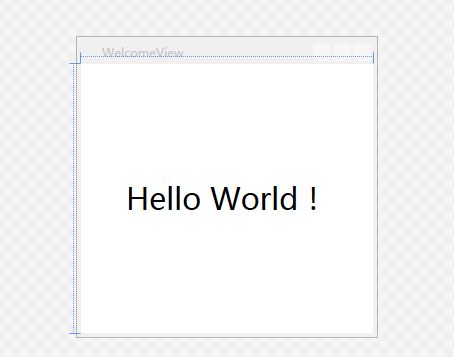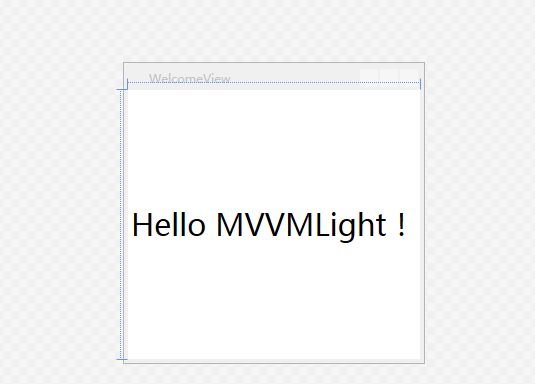MVVMLight -构造器
如果使用NuGet安装的是完整的一个是MVVM Light 框架,而非 MVVM Light libraries only的时候,总是会带上ViewModelLocator类,并且生成资源字典并加入到了全局资源中。
![]()
1
9
10
11
13
14 ![]()
所以每次App初始化的时候,就会去初始化ViewModelLocator类。
实际上他就是一个很基本的视图模型注入器。在构造器中把使用到的ViewModel统一注册,并生成单一实例。
然后使用属性把它暴露出来,每当我们访问属性的时候,就会返回相应的ViewModel实例。
![]()
1 /*
2 In App.xaml:
3
4
7
8 In the View:
9 DataContext="{Binding Source={StaticResource Locator}, Path=ViewModelName}"
10
11 You can also use Blend to do all this with the tool's support.
12 See http://www.galasoft.ch/mvvm
13 */
14
15 using GalaSoft.MvvmLight;
16 using GalaSoft.MvvmLight.Ioc;
17 using Microsoft.Practices.ServiceLocation;
18
19 namespace MVVMLightDemo.ViewModel
20 {
21 ///
22 /// This class contains static references to all the view models in the
23 /// application and provides an entry point for the bindings.
24 ///
25 public class ViewModelLocator
26 {
27 ///
28 /// Initializes a new instance of the ViewModelLocator class.
29 ///
30 public ViewModelLocator()
31 {
32 ServiceLocator.SetLocatorProvider(() => SimpleIoc.Default);
33
34 #region Code Example
35 ////if (ViewModelBase.IsInDesignModeStatic)
36 ////{
37 //// // Create design time view services and models
38 //// SimpleIoc.Default.Register();
39 ////}
40 ////else
41 ////{
42 //// // Create run time view services and models
43 //// SimpleIoc.Default.Register();
44 ////}
45 #endregion
46
47 SimpleIoc.Default.Register();
48 }
49
50 #region 实例化
51 public MainViewModel Main
52 {
53 get
54 {
55 return ServiceLocator.Current.GetInstance();
56 }
57 }
58
59 #endregion
60
61 public static void Cleanup()
62 {
63 // TODO Clear the ViewModels
64 }
65 }
66 } ![]()
注意的是,这边把MVVMLight 自带的SimpleIoc作为默认的服务提供者,它是个简易的注入框架。
为了统一化,并且在设计的时候可以看到看到ViewModel的数据,这边用ServiceLocator 又将SimpleIoc包裹了一层。
上面我们写了一个Hello World,这时候就可以用这种方式改装了。
![]()
1 /*
2 In App.xaml:
3
4
7
8 In the View:
9 DataContext="{Binding Source={StaticResource Locator}, Path=ViewModelName}"
10
11 You can also use Blend to do all this with the tool's support.
12 See http://www.galasoft.ch/mvvm
13 */
14
15 using GalaSoft.MvvmLight;
16 using GalaSoft.MvvmLight.Ioc;
17 using Microsoft.Practices.ServiceLocation;
18
19 namespace MVVMLightDemo.ViewModel
20 {
21 ///
22 /// This class contains static references to all the view models in the
23 /// application and provides an entry point for the bindings.
24 ///
25 public class ViewModelLocator
26 {
27 ///
28 /// Initializes a new instance of the ViewModelLocator class.
29 ///
30 public ViewModelLocator()
31 {
32 ServiceLocator.SetLocatorProvider(() => SimpleIoc.Default);
33
34 #region Code Example
35 ////if (ViewModelBase.IsInDesignModeStatic)
36 ////{
37 //// // Create design time view services and models
38 //// SimpleIoc.Default.Register();
39 ////}
40 ////else
41 ////{
42 //// // Create run time view services and models
43 //// SimpleIoc.Default.Register();
44 ////}
45 #endregion
46
47 SimpleIoc.Default.Register();
48 SimpleIoc.Default.Register();
49 }
50
51 #region 实例化
52 public MainViewModel Main
53 {
54 get
55 {
56 return ServiceLocator.Current.GetInstance();
57 }
58 }
59
60 public WelcomeViewModel Welcome
61 {
62 get
63 {
64 return ServiceLocator.Current.GetInstance();
65 }
66 }
67
68 #endregion
69
70 public static void Cleanup()
71 {
72 // TODO Clear the ViewModels
73 }
74 }
75 } ![]()
注册完WelcomeViewModel实例之后,我们就可以在相应的View中使用了 ,原本的
1 public WelcomeView()
2 {
3 InitializeComponent();
4 this.DataContext = new WelcomeViewModel();
5 }中的 this.DataContext = new WelcomeViewModel(); 可以去掉了,直接在WelcomeView中这样写:
DataContext="{Binding Source={StaticResource Locator},Path=Welcome}",如下图:
这样做的好处,一个是绑定化相对于简单粗暴的赋值方式,更合理。一个是在可视化窗口可以看到所绑定的数据,达到所见即所得的友好效果。
如下:
当我们改掉绑定到的数据,编译之后就会立马呈现:
服务端开发人员可以专心写ViewModel的业务逻辑代码,UI开发人员可以专注设计视图了,
同样 ViewModel可以绑定到不同的视图上,所以从这边就可以体现出他其中的三个重要特性:低耦合、可重用性、独立开发。
大家有没有发现ViewModelLocator 类中还有个 ClearnUp()方法,主要目的用来清除ViewModel实例的。
ViewModelBase继承了GalaSoft.MvvmLight.ICleanup接口,并在自己的类中写好了Cleanup()虚方法。所以我们在实例ViewModel类中可以重写Cleanup()来达到清除当前实例的目的。
这个在后面几篇讲解数据绑定和命令的时候会详细了解。
点击下载文中示例代码



